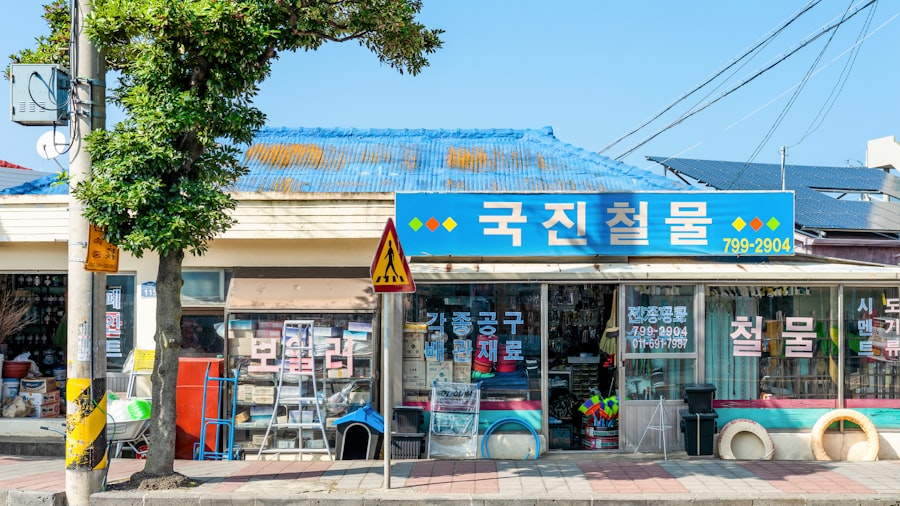Search Engine Optimization (SEO) is a multifaceted digital marketing strategy aimed at enhancing a website’s visibility on search engines like Google, Bing, and Yahoo. At its core, SEO involves optimizing various elements of a website to ensure that it ranks higher in search engine results pages (SERPs). This process is crucial for businesses, including car dealerships, as it directly influences the amount of organic traffic a site receives.
The higher a dealership ranks for relevant keywords, the more likely potential customers are to discover their offerings. The fundamental components of SEO can be categorized into three main areas: on-page SEO, off-page SEO, and technical SEO. On-page SEO refers to the optimization of content and HTML source code on the website itself, including the use of keywords, meta tags, and internal linking.
Off-page SEO encompasses activities that occur outside the website, such as link building and social media engagement, which help to establish authority and trustworthiness. Technical SEO involves optimizing the backend structure of a website to improve its performance and user experience, including site speed, mobile-friendliness, and secure connections. Understanding these components is essential for any dealership looking to enhance its online presence.
Key Takeaways
- Understanding the Basics of SEO:
- SEO stands for search engine optimization and is the process of improving your website’s visibility on search engines.
- It involves understanding how search engines work and what people are searching for online.
- Implementing Keywords for Your Dealership:
- Keywords are the words or phrases that people type into search engines when looking for information.
- Choose relevant keywords for your dealership and incorporate them into your website content.
- Optimizing Your Website for Search Engines:
- Ensure your website is user-friendly and mobile-responsive.
- Optimize meta tags, headings, and images with relevant keywords.
- Creating High-Quality Content:
- Produce engaging and informative content that is relevant to your dealership and target audience.
- Regularly update your website with fresh content to keep visitors engaged.
- Utilizing Local SEO Strategies:
- Target local keywords and phrases to attract customers in your area.
- Claim and optimize your Google My Business listing for local search visibility.
- Building Quality Backlinks:
- Earn backlinks from reputable and relevant websites to improve your website’s authority.
- Focus on quality over quantity when it comes to backlinks.
- Utilizing Social Media for SEO:
- Share your website content on social media platforms to increase visibility and drive traffic.
- Engage with your audience and encourage social sharing to boost your website’s SEO.
- Monitoring and Adjusting Your SEO Strategy:
- Regularly monitor your website’s performance using tools like Google Analytics.
- Adjust your SEO strategy based on performance data and changes in search engine algorithms.
Implementing Keywords for Your Dealership
Keywords are the foundation of any successful SEO strategy. They are the terms and phrases that potential customers use when searching for products or services online. For a car dealership, identifying the right keywords is crucial for attracting the right audience.
This process begins with thorough keyword research, which involves using tools like Google Keyword Planner, SEMrush, or Ahrefs to discover relevant search terms that potential buyers are using. For instance, a dealership specializing in electric vehicles might focus on keywords such as “best electric cars,” “electric vehicle dealership,” or “affordable EVs.” Once the relevant keywords have been identified, they must be strategically implemented throughout the dealership’s website. This includes incorporating them into page titles, meta descriptions, headers, and body content.
However, it is essential to maintain a natural flow in the writing; keyword stuffing can lead to penalties from search engines and a poor user experience. For example, instead of simply repeating “electric cars” throughout a webpage, a dealership could create informative content that discusses the benefits of electric vehicles, their features, and comparisons with traditional cars while naturally integrating the target keywords.
Optimizing Your Website for Search Engines

Website optimization is a critical aspect of SEO that ensures search engines can effectively crawl and index a dealership’s site. A well-optimized website not only improves search engine rankings but also enhances user experience, leading to higher conversion rates. One of the first steps in optimizing a website is ensuring that it is mobile-friendly.
With an increasing number of users accessing websites via smartphones and tablets, having a responsive design is essential. Google prioritizes mobile-friendly sites in its rankings, making this an indispensable factor for dealerships. In addition to mobile optimization, site speed plays a significant role in both user experience and SEO rankings.
A slow-loading website can frustrate users and lead to high bounce rates. Tools like Google PageSpeed Insights can help identify areas for improvement, such as image compression or minimizing JavaScript and CSS files. Furthermore, implementing structured data markup can enhance how search engines understand the content on a dealership’s site.
This markup can provide additional context about vehicles available for sale, customer reviews, and pricing information, potentially leading to rich snippets in search results that attract more clicks.
Creating High-Quality Content
| Metrics | Data |
|---|---|
| Engagement Rate | 10% |
| Time on Page | 2 minutes |
| Page Views | 5000 |
| Shares | 200 |
Content is king in the realm of SEO; high-quality content not only engages users but also establishes authority and trustworthiness in the eyes of search engines. For car dealerships, creating informative and valuable content can significantly impact their online visibility. This could include blog posts about vehicle maintenance tips, comparisons between different car models, or guides on financing options.
By addressing common questions and concerns that potential buyers may have, dealerships can position themselves as knowledgeable resources in the automotive industry. Moreover, incorporating various content formats can enhance engagement and reach. Videos showcasing new car features or virtual tours of the dealership can capture user attention more effectively than text alone.
Infographics summarizing key statistics about vehicle safety ratings or fuel efficiency can also be shared across social media platforms to drive traffic back to the dealership’s website. Regularly updating content not only keeps the website fresh but also signals to search engines that the site is active and relevant.
Utilizing Local SEO Strategies
For car dealerships, local SEO is particularly important as most customers are searching for vehicles within their geographical area. Local SEO strategies focus on optimizing a dealership’s online presence to attract customers from specific locations. One of the most effective ways to enhance local visibility is by creating and optimizing a Google My Business (GMB) listing.
This free tool allows dealerships to manage their online presence across Google Search and Maps, providing essential information such as location, hours of operation, contact details, and customer reviews. In addition to GMB optimization, local citations play a crucial role in local SEO. These citations are mentions of the dealership’s name, address, and phone number (NAP) across various online directories and platforms.
Consistency in NAP information across all listings helps build credibility with search engines. Furthermore, encouraging satisfied customers to leave positive reviews on platforms like Google and Yelp can significantly enhance local rankings while also influencing potential buyers’ decisions.
Building Quality Backlinks

Backlinks are links from other websites that point to your dealership’s site; they serve as endorsements of your content’s quality and relevance. Search engines view backlinks as a vote of confidence from one site to another, making them a vital component of any SEO strategy. Building quality backlinks requires a strategic approach focused on creating valuable content that others want to link to.
For instance, if a dealership publishes an in-depth guide on electric vehicle incentives in their state, it may attract attention from local news outlets or automotive blogs looking to reference credible sources. Engaging in partnerships with local businesses or organizations can also facilitate backlink opportunities. Sponsoring community events or collaborating with local charities can lead to mentions on their websites or social media platforms.
Additionally, guest blogging on reputable automotive websites allows dealerships to showcase their expertise while earning valuable backlinks in return. It’s important to focus on quality over quantity; backlinks from authoritative sites carry more weight than numerous links from low-quality sources.
Utilizing Social Media for SEO
Social media platforms have become integral to modern marketing strategies and can significantly impact SEO efforts for car dealerships. While social media signals do not directly influence search engine rankings, they play a crucial role in driving traffic to a dealership’s website and enhancing brand visibility. By sharing engaging content on platforms like Facebook, Instagram, Twitter, and LinkedIn, dealerships can reach a broader audience and encourage interactions that lead to increased website visits.
Creating shareable content is key; this could include eye-catching images of new arrivals, customer testimonials, or informative videos about vehicle features. Engaging with followers through comments and messages fosters community and builds relationships with potential customers. Additionally, social media advertising can target specific demographics based on location, interests, and behaviors, driving qualified traffic to the dealership’s site while enhancing brand awareness.
Monitoring and Adjusting Your SEO Strategy
SEO is not a one-time effort but an ongoing process that requires regular monitoring and adjustments based on performance metrics. Utilizing tools like Google Analytics and Google Search Console allows dealerships to track key performance indicators (KPIs) such as organic traffic levels, bounce rates, conversion rates, and keyword rankings. Analyzing this data provides insights into what strategies are working effectively and which areas need improvement.
Regularly reviewing keyword performance helps identify trends in consumer behavior; if certain keywords are underperforming or if new keywords are emerging in popularity, adjustments should be made accordingly. Additionally, keeping an eye on competitors’ strategies can provide valuable insights into industry trends and best practices. By remaining adaptable and responsive to changes in both user behavior and search engine algorithms, dealerships can maintain their competitive edge in the digital landscape while continually improving their online presence.



